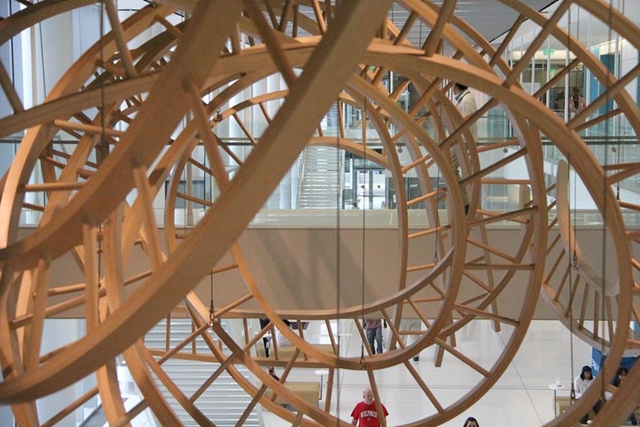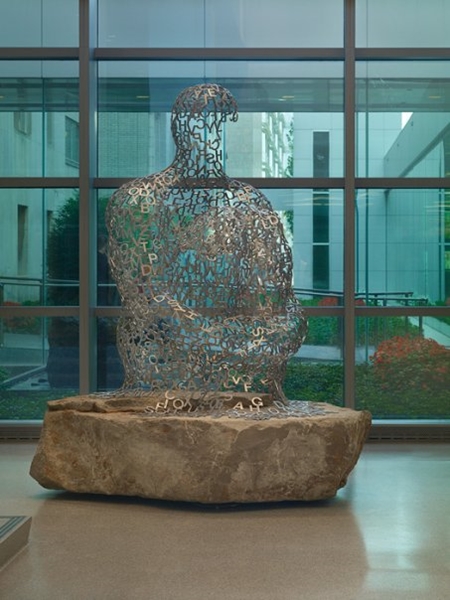Art World
More Hospitals Harnessing Healing Power of Art

Photo: Eskenazi Health.

Benjamin Sutton

Hospitals in the United States are increasingly recognizing the healing powers of contemporary art, devoting spaces, special budgets, and in some cases curatorial positions to commissioning and displaying artworks for the benefit of their patients. As of 2009 about half of US hospitals had arts programs, whether visual or performing, according to a report by the Arts & Health Alliance (formerly the Society for Arts in Healthcare). Two of the leading institutions, the Wall Street Journal reports, are major Midwestern medical centers: Cleveland Clinic and Eskenazi Health in Indianapolis.
“These are not just accoutrements or aesthetics anymore,” Lisa Harris, Eskenazi Health’s chief executive, tells the WSJ. “This is right down the fairway of what we need to be doing to promote health.” The Eskenazi Health’s brand new Sidney & Lois Eskenazi Hospital includes 19 works of contemporary art commissioned specifically for the building with $1.5 million provided by donors.

Jaume Plensa, Cleveland Soul at the Cleveland Clinic.
Photo: © Benjamin Benschneider.
So what should hospital art look like? Ideally it is figurative and represents nature, according to studies conducted in 1993, 2011, and 2012 cited by the WSJ. And what doesn’t go over so well? Per the findings published in the Health Environments Research & Design Journal in 2012, art featuring “fearful or angry faces, ambiguous subject matter, high novelty and unfamiliarity, lack of realism and sharp contours” elicited negative responses from patients.
A perfect example of successful hospital art is Jennifer Steinkamp’s video installation Mike Kelley 1, whose title probably makes it sound a lot more disturbing than it really is. The animated video shows a tree going through the cycle of the four seasons, and proved very therapeutic for Heather Kreinbrink and her husband when their 12-year-old daughter was hospitalized at Cleveland Clinic in 2010. “It ended up being something we would go to every day for peace and to come to terms with what was happening,” Kreinbrink told the WSJ.